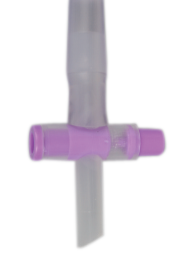T- Valve
Our heart is basically a pump with four valves that keeps your blood flowing in the right direction at the proper rate. With each heartbeat, your t- valve open and close. But if something has caused your valves not to open or close properly, you may be a candidate for heart valve replacement surgery.
Valves can become damaged through disease or aging. When the valve does not open properly, the problem may be stenosis - an abnormal narrowing of the aortic valve. You need the valve to open properly so the right amount of blood can pump through it. If the valve doesn't close properly, the condition is called regurgitation, which is a problem because the blood leaks back into other parts of the heart. The type of treatment your doctor will recommend depends on the heart valve involved and the type and severity of the valve disease:
Aortic valve disease
Mitral valve disease
Pulmonary valve disease
Tricuspid valve disease
Some of the tests and procedures that your doctor may order to assess the condition of your heart include:
resting and exercise electrocardiogram (ECG)
Holter monitor
signal-averaged ECG
cardiac catheterization
chest X-ray
computed tomography (CT scan) of the chest
echocardiography
electrophysiological studies
magnetic resonance imaging (MRI) of the heart
myocardial perfusion scans
radionuclide angiography
ultrafast CT scan
The doctor may decide that the diseased valve can be repaired using a ring that supports your original valve. Or the decision may be to remove the entire valve and replace it with an artificial valve. Artificial mechanical valves are made of metal or plastic or tissue from animal valves. Doctors also use human valves taken from cadavers.
Years ago, this type of procedure meant open-heart surgery. There was no other way to get to your heart than by opening your chest, cutting the breastbone or sternum in half and spreading it apart. Once the heart was exposed, the doctor would insert large tubes into the heart that pump the blood through your body during the surgery. The tubes, part of a cardiopulmonary bypass machine, keep the blood flowing while the doctor stops your heart to replace or repair the valve.
Today, there is often another alternative - minimally invasive heart surgery. The cardiac surgeon is able to make small incisions in the right side of your chest, instead of opening up your chest cavity, to get to the heart. The surgeon maneuvers to work between the ribs. The result is a far less painful recovery and a quicker recovery. The surgeon will still have to stop your heart to repair or replace the valve, but with this less-invasive procedure, the doctor actually has a better view of some parts of your heart than in the more invasive approach.
You need to talk to your doctor to find out if minimally invasive heart surgery is an option for you. Generally speaking, people who have already undergone heart surgery or have certain heart diseases will not be a candidate for less invasive heart surgery.
Symptoms
So how do you know if there is a problem with your heart? Usually a person with a damaged or diseased heart valve will experience the following symptoms:
Dizziness
Chest pain
Difficulty breathing
Heart palpitations
Swelling of the feet, ankles, or abdomen
Rapid weight gain due to fluid retention
Risks associated with heart valve replacement
No surgery is without its risks, including heart valve replacement. These risks can include, but are not limited to:
Bleeding during or after the surgery
Blood clots that can cause heart attack, stroke, or lung problems
Infection at the incision site
Pneumonia
Breathing problems
Abnormal heart rhythms
What to expect after the procedure
You can expect to remain closely monitored for several days, including time spent in the intensive care unit. Your doctor will keep you connected to monitors that constantly monitor your heart, blood pressure, breathing rate and oxygen level.
It is important that during this time that you cough and take deep breaths. While this may not feel very comfortable because you are sore from the surgery, it is extremely important so mucus doesn't lodge in your lungs and cause pneumonia. And of course, you will be offered pain medication to help keep you comfortable.
Do not expect to come out and eat a four-course meal. You will start with a liquid diet and advance to more solid foods as you can tolerate them. Gradually, as you recover, you will be moved to a room and encouraged to get out of bed and walk the floor.
When it is time to go home, your doctor will give you specific advice regarding activity, medications and wound care. You probably will not be able to drive for a period of time. Follow your doctor's advice and return for all follow-up visits.
For this we need T-valve, if you wants to order T- Valve for medical use, order now from
Nexgen Medicals. We offers all
health care products at wholesale price.

